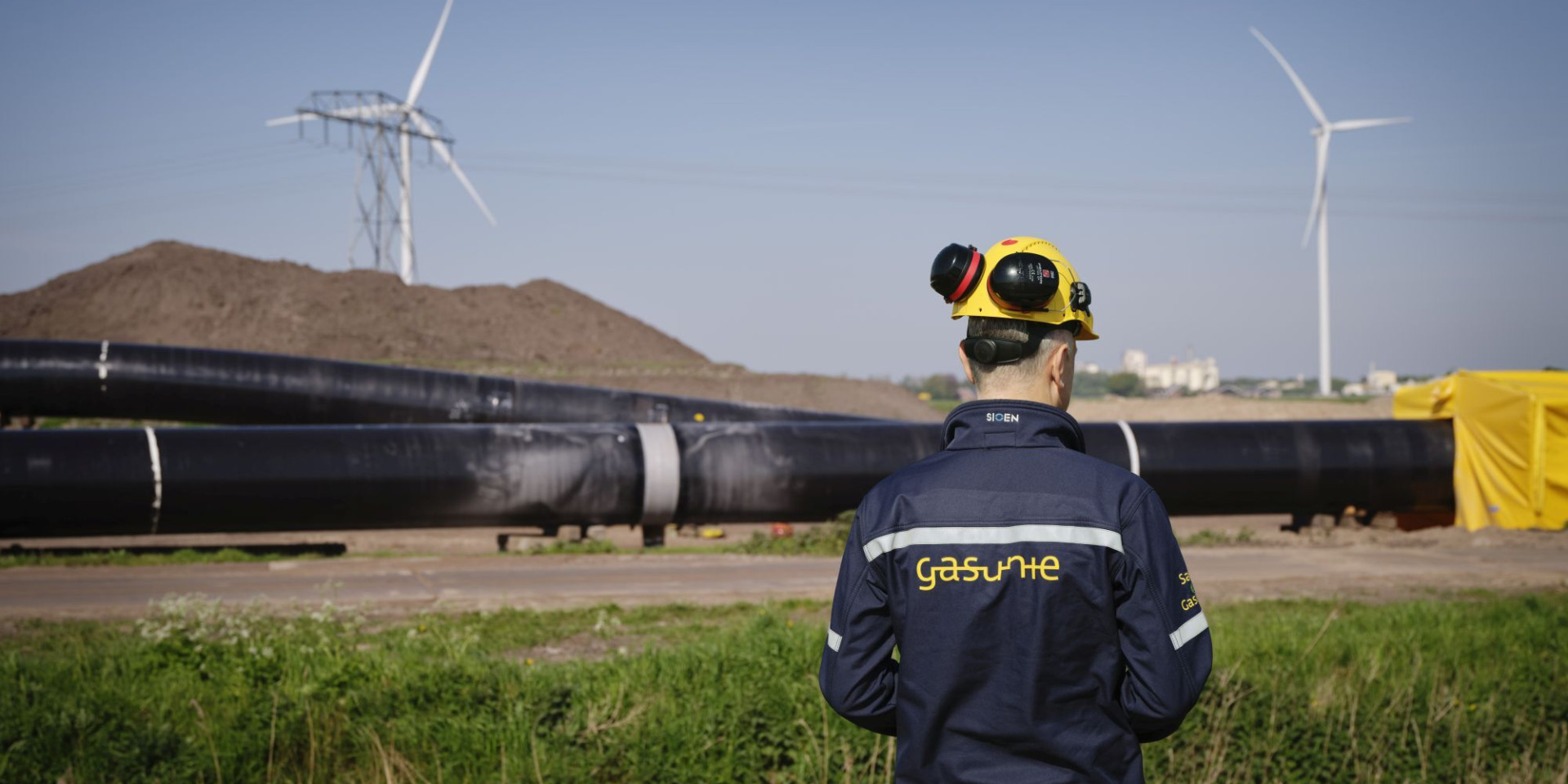
1.1 Action on three fronts
For as long as six decades now, Gasunie has been serving the public interest, providing safe, reliable, effective transmission of natural gas so that households and companies in our core markets have access to energy at any time.
Most of the gas that flows through our pipelines is of the fossil kind. Extraction, transmission and consumption of that gas all contribute to the heating up of the atmosphere. The European Union's goal is to become climate neutral by 2050. This means the EU is aiming for an economy with net zero greenhouse gas emissions
This is why Gasunie is transforming from a gas network company into an energy infrastructure company. We are in a unique position to get and keep the energy transition in our part of Europe on the right track. Transmission and storage of renewable gaseous energy such as green gas and hydrogen will be indispensable ingredients of the energy mix of the future, as will the transmission and storage of captured CO2. Natural gas may play a smaller rol by 2050, in combination with CCUS (carbon capture, utilization and storage).
As we move towards a carbon-neutral future, Gasunie’s knowledge, experience and expertise will continue to be important. And as we transform, we, as a public company, want to set the right example: we have identified opportunities in our day-to-day operations to reduce our own and our value chain partners’ carbon footprint.
The fact that the atmosphere is already heating up is leading to an increase in weather-related risks to our infrastructures (referred to as ‘assets’ in the rest of this document), including extreme precipitation, drought, heat waves, and flooding. These risks can cause transmission interruptions and do damage to people and the environment.
Given all of the above, our Climate Action Plan is made up of three pillars:
We will share for each of these pillars what strategy we have developed, what actions we are already taking, what goals we have set ourselves, and what progress we have made towards those goals. In writing this plan, we also came up against gaps in our strategy, policy, and goals. In some aspects, the strategy has not been fully fleshed out yet, the policy formulated is not yet comprehensive enough, we have set too few goals, and too few goals have actually been achieved. There is also too little interconnection between our strategy, policy, goals, and achievements sometimes. We expect to fill many of these gaps over the coming years.
1.2 Climate change is material
‘Energy transition’ and ‘Emissions’ are material topics for Gasunie, i.e. topics that our stakeholders feel we should report on in our annual report. From 2024, reporting on the material topics will be a CSRD requirement. For the 2023 annual report, we identified our material topics based on the double materiality principle, as required by the CSRD. This means that we considered the relevance of our sustainability topics from two perspectives:
- Impact Materiality: the impact that Gasunie has on people and the environment (the inside-out perspective)
- Financial Materiality: the risks and opportunities that various developments and events (ESG and other factors) create for Gasunie (the outside-in perspective)
‘Energy transition’ and ‘Emissions’ are the topics for which Gasunie scores relatively high in terms of both impact materiality and financial materiality and where risks and opportunities have been identified. This outcome is comparable to that of the previous materiality assessments.
Energy transition: Accelerating the transition to a sustainable energy supply. With our infrastructure and knowledge, we want to enable our users to make the switch to zero-emission energy.
Emissions: Limiting the environmental impact of our processes, products and services by reducing GHG emissions and nitrogen deposition.


